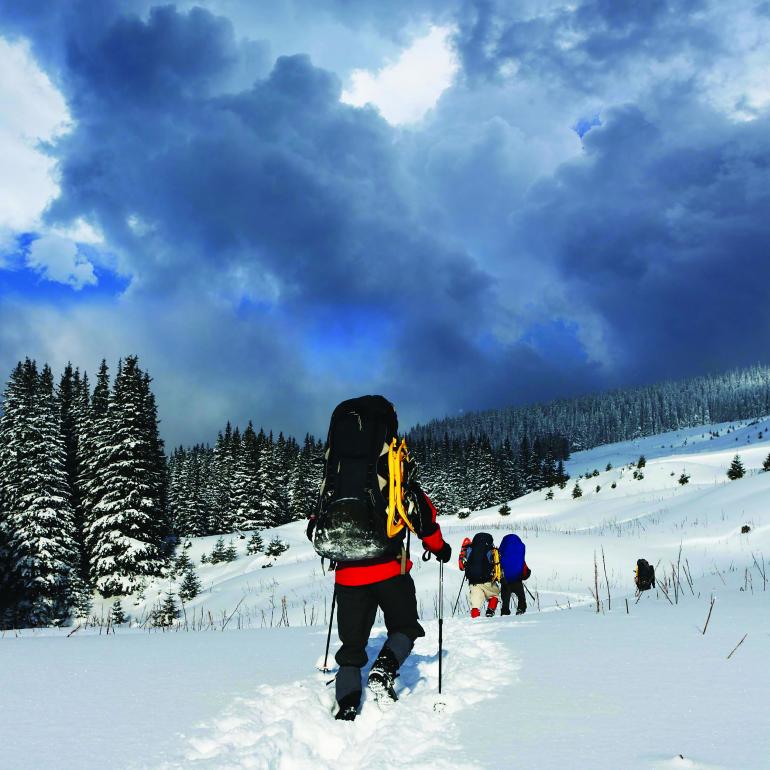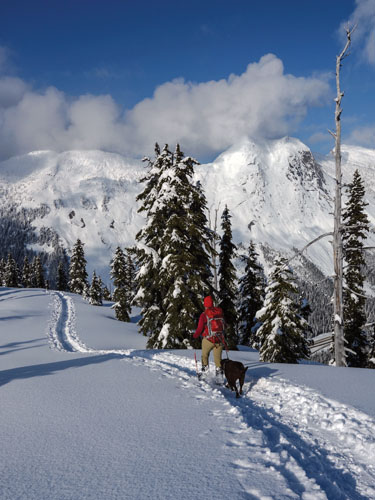The ninth circle of hell, the most foreboding doom of Dante’s Inferno is not a fiery furnace, but a place of special danger — darkness, a frigid sky, an icy lake, sinners in various states of frozen eternity. Surely, this literary example is a reminder to us all that humanity appreciates the outdoors in a very narrow temperature range, and enjoys it most in an even smaller band of perhaps just a 50-degree margin. Extreme heat or cold scurry us indoors, where we can again comfortably appreciate the temperature “norms” we all take for granted.
Winter adds other perils; and a Montana winter can be a special hell for the unlucky or unfortunate. Walking or hiking is more challenging, with sudden stumbles or tumbles creating difficult or dangerous situations that may be of little bother on warmer days. Outdoor enthusiasts on skis, snowboards, sleds, snowmobiles, skates, fat-tire bikes, and other forms of motion are especially susceptible to all manner of mishaps. Even time becomes a factor as the sun settles in early and temps fall quickly, with a precipitous loss of light and heat.

As much as winter is different from summer, so does “winter first aid’ vary from November through April (some would say June!) in Montana. So, what kinds of mishaps or accidents are the most common? And how to are they best treated while in winter’s grip?
General Treatment for Outdoor First Aid

Shock: Lay the victim down with feet about 12 inches above head unless head, neck, back, or bone injury is suspected.
ABC’s: Airway, Breathing, and Circulation. Ensure the patient has a clear, unobstructed airway, and that he or she is breathing. Administer CPR if necessary.
Stop-Gap: Stop the major bleeds or fluid losses immediately with available material.
Warm: Keep the victim as warm and comfortable as possible.
Signal: By cell phone, radio, or visual displays if you and the victim are unable to leave the immediate vicinity where the injury has occurred.
Security: Establish safety as possible from animals and especially weather, avoiding further harm to the victim and yourself
Shelter: If overnight or extended wait is expected, create shelter and campfire.
Please note that the treatments reviewed in this article are temporary and to be used only as a guide to assisting victims under significant duress. In ALL cases, evacuate and seek medical attention as soon as possible.
Common Winter Injuries and First Aid Treatments
Slips and falls
Sudden, accidental collapse, rapidly and without control.
Symptoms Signs of concussion-confusion, disorientation, loss of consciousness vision problems, vomiting, broken bones, bleeding.
Treatment Keep victim’s body still and warm; examine and restrain any blood loss; administer CPR if victim is not breathing.
Chilblain or frostnip
Prolonged exposure of bare skin to low temperatures.
Symptoms Redness or pallor of exposed areas; hot, tender, itching skin
Treatment Warm the affected area slowly with warm breath or body warmth, such as armpits or hands.
Frostbite
Extreme exposure of bare skin to low temperatures.
Symptoms Tingling and numbness; sudden whitening of skin; frozen area feels solid to touch; pale, waxy appearance of skin; loss of feeling pain
Treatment Loosen clothing and jewelry; cover with blankets or other available wear; give warm liquids if possible; DO NOT rub affected areas with snow and ice; DO NOT expose affected areas to extreme heat; DO NOT massage; DO NOT soak in water.
Snowblindness
The effect on eyes from severe glare of an ice or snow field
Symptoms Scratchy or watery feeling in the eyes; eye redness; headache; pain with light exposure.
Treatment Cover eyes with a dark cloth; lead to safety
Hypothermia
The gradual destruction of the body due to lowering body temperatures; water, perspiration, wind, physical exhaustion and lack of food may exacerbate symptoms.
Symptoms Apathetic or lethargic responses; shivering; pale, cold skin; slurred speech; poor muscle coordination; weak pulse; slow and shallow breathing.
Treatment Rewarm the body evenly with another body or heat or fire source (covering with blankets, etc. will not help); protect from the elements; warm or hot drink if available.
Cold weather dehydration
Body loss of fluids, salt and minerals, often difficult to assess in cold weather. Often brought on by strenuous exercise or activity.
Symptoms Parched mouth, tongue and throat; nausea; dizziness, muscle cramping; feeling of tiredness and weakness.
Treatment Keep warm; loosen clothing; give liquids; rest.
Foot Immersion
Wet or damp conditions of the feet and porous footwear
Symptoms Cold; numbness; shooting pains; pale or bluish cast of foot or feet.
Treatment Gradually rewarm and dry feet; elevate the feet; DO NOT moisten or massage the feet.
Active People Prevent Problems
 Active People Prevent Problems
Active People Prevent Problems
Do Your Warm-up Exercises
If nothing else, start out on your adventures slowly before going “all-out.”
Use Protective Equipment
From your clothing to your boots, gloves, goggles and helmet — button it down!
Know Your Activity and Ability
And know your limits too…learn, train, and take your time to achieve proficiency.
Don’t Go It Alone — especially in Montana
If you do go it “alone” let someone know where you are headed.
Where Am I?
Soooo easy to get lost in Montana. Don’t underestimate the snowy confusion or the forested foolery of Big Sky country. Keep track of where you are, and where you’ve been.
Leave a Comment Here